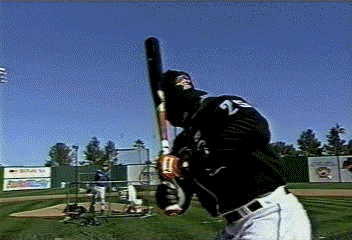quote:Originally posted by Prime9:quote:INDEPENDENTLY. Argue with Slaught....
Power & Results; we all know the phrase "perception is reality." I look at "Slaughts" video and see what he's describing. However, I believe and "swear" his video confirms my belief, that the back knee moving inward allows the hips/shoulders to begin rotation and is FOLLOWED by the back elbow, not the other way around.
What we see and how we convey it, often makes these conversations so contradictory! His description of "the Gated swing" explaining how the hands must work independent and that they aren't rivoted to the body is good. Doesn't the "kinetic chain" of energy developed in the best baseball swing, HAVE to begin from the ground and move upwards? And isn't the goal to perfectly syncronize the "whip action" to generate maximum torque, hand and bat speed so that any break in movement, which would decrease power, is inperceptable?
Prime,
I think you are correct in that the rear knee starts down and in as the hands move to the handset and the rear foot and knee are providing resistance to the upper body turning/moving in the opposite direction. So...the rear hip has already started turning/moving to the ball as the hands are going in another direction. It can be up, down, back, around, however as long as they don't go in the same direction. At full separation, the shoulders laterally tilt, the hands and forearms then take the barrel rearward as the rear hip drives/ thrusts forward. "Cusp" is reached and the rear hip wins the tug-of-war and the hands and barrel are released. The barrel is then directed by the hands to the ball.



